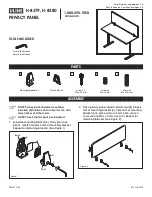
B
I
PAP S
YNCHRONY
S
ERVICE
& T
ECHNICAL
I
NFORMATION
T
ROUBLESHOOTING
& D
IAGNOSTICS
- P
AGE
7
1032443, R
EV
. 00
P
ATIENT
A
LARMS
The BiPAP Synchrony has the following patient alarms:
•
Apnea
•
Patient Disconnect
•
Low Minute Ventilation
•
Low Tidal Volume
A
PNEA
A
LARM
The Apnea Alarm is a high priority alarm that detects the sensation of spontaneous breathing. It
occurs when the time between spontaneous breaths exceeds the Apnea alarm time setting (10, 20, or
30 seconds). A setting of zero disables the Apnea Alarm. When an apnea alarm occurs, the
APNEA
and
ALARM
icons flash on display and the LCD backlight is turned on. This alarm does not
automatically reset. Press the
Reset
button to manually reset the alarm.
P
ATIENT
D
ISCONNECT
ALARM
The Patient Disconnect Alarm is a high priority alarm. It occurs when the patient is disconnected from
the BiPAP Synchrony for the time specified in the Patient Disconnect alarm time setting (0, 15,or 60
seconds). When a patient disconnect alarm occurs, the Patient and ALARM icons flash on the display
and the LCD backlight is turned on. A setting of zero disables the Patient Disconnect alarm. This
alarm does not automatically reset. Press the Reset button to manually reset the alarm.
L
OW
M
INUTE
V
ENTILATION
The Low Minute Ventilation alarm is a high priority alarm. It occurs when the calculated minute
ventilation is less than or equal to the alarm setting. When a Low Minute Ventilation alarm occurs, the
Alarm
and
Min Vent
icons flash on the display and the LCD backlight is turned on. This alarm does
not automatically reset. Press the reset button to manually reset the alarm.
NOTE
A setting of zero disables the Low Minute Ventilation alarm.
A
A
















































